#Inboard Engine
Text
Powering the Waves: Small Marine Engines Market Insights
The small marine engines market value will reach USD 11,696.1 million by 2030 from USD 7,967.5 million in 2022, at a 4.9% CAGR. This growth can be credited to the growing demand for numerous kinds of boats utilized for recreational and relaxation events, and the growing coastal tourism for water activities including yachting, boating, and fishing.
Furthermore, the leaning toward the water-based leisure industry has been on the surge because of the increased expenditure on water-associated activities by a chunk of the populace. Also, the sense of better-quality mental health because of the quality time spent during water-based activities is a main factor for the booming boating demand, which, ultimately, quickens the outward and inward-placed engines of marine vessels.

The mounted customer involvement in marine fun activities is offering worthwhile development opportunities for engine demand. In the past years, marine tourism and relaxation activities like yachting, power boating, and sailing, have experienced a significant surge, because of the growing disposable income of consumers. Moreover, rapid development in adventure tourism is helping water recreational activities.
As per a government-issued research article, above 50 million Americans went fishing, including artisanal fishing, commercial, and artisanal fishing, in 2021, which generated a profitable demand for outdoor or inner-placed motors in marine recreational vehicles.
the recreational boats category, on the basis of the application segment, generated approximately USD 3.5 billion in revenue in 2022. And, a surge in demand for technically progressive fishing boats is projected to drive the development of the industry for engines and propulsion systems across the forecast period.
In 2022, the outboard motor category dominated the industry, and the category is also projected to advance at a CAGR of 5% in the coming years. This is mainly because of the technical advances, the requirement for outboard boats is projected to increase significantly in the coming few years.
#Small Marine Engines#Maritime Industry#Outboard Motors#Inboard Motors#Fuel Efficiency#Market Trends#Boating Enthusiasts#Lightweight Design#Global Market#Innovation#Recreational Boating#Commercial Vessels#Emerging Technologies#Environmental Impact#Regulatory Compliance#Power Output#Market Dynamics#Compact Engines#Coastal Tourism#Fishing Boats
0 notes
Text
New Yanmar 8LV320 Inboard Diesel Engine for sale V8 Engine, 4.46-liter diesel engine, Turbocharged, Gears – KMH50A / KMH52V, Stern Drive – ZT370. For ski boats to fast sports craft to luxury cruisers – new build or repowering – the 8LV is at the forefront of today’s propulsion technology, providing the kind of high-end performance associated with V8 gasoline engines, but with all of the solid, long-life, and cost-effective benefi ts of diesel.
+49 1521 6449600
0 notes
Text

"A Cluster of eight H-1 engines were used to thrust the first stage of Saturn I (S-I stage) and Saturn IB (S-IB stage). The engines were arranged in a double pattern. Four engines, located inboard, were fixed in a square pattern around the stage axis, while the remaining four engines were located outboard in a larger square pattern and each outer engine was gimbaled. The H-1 engine, fueled with liquid oxygen (LOX) and kerosene (RP-1), had a thrust of 188,000 pound each for a combined thrust of over 1,500,000 pounds. Each H-1 engine was developed under the direction of Marshall Space Flight Center (MSFC)."
Date: 1960s
NASA ID: 6005249
#Rocketdyne H-1#H-1#Rocket Engine#Saturn I Block II#Saturn IB#S-I#S-IB#Saturn I#Rocket#NASA#Apollo Program#1960s#my post
58 notes
·
View notes
Photo

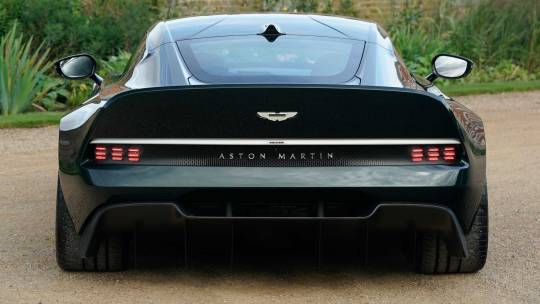
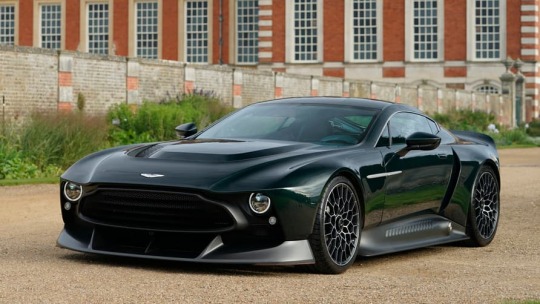





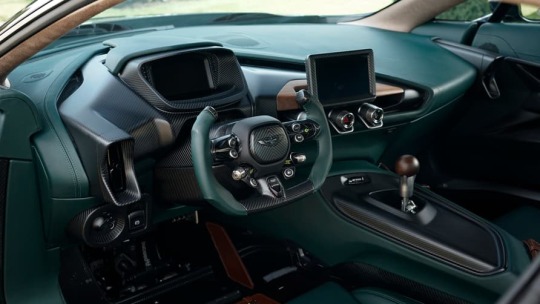
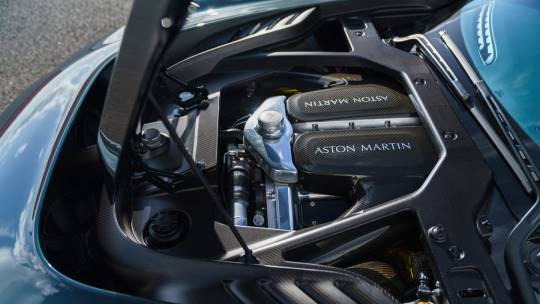
Aston Martin Victor (1 of 1).
Meet the Aston Martin Victor, a one-off commission made by the company’s Q division and utilising a greatest hits package of learnings from the One-77, Vulcan and Valkyrie hypercars.
Knowing where to start is tough, but let’s go bottom up. Underpinning the whole thing is a refurbished carbon monocoque chassis from the One-77, which is also where the Victor’s front-mounted 7.3-litre V12 engine has been sourced. It produced 750bhp when the One-77 launched a decade ago which – said no one ever – is not enough.
It’s been sent back to Cosworth for another fettle and has returned producing a significantly more terrifying 836bhp (and 606lb ft of torque), still without a turbo in sight. Yep, 836bhp via natural aspiration. The noise is going to be good, isn’t it?
It drives the rear wheels via a six-speed manual gearbox – in place of the One-77’s automated unit – making this the most powerful stick-shift Aston road car ever. There is a ‘bespoke motorsport clutch’, and I probably don’t need to explain why.
Helping its driver manage all of that are the inboard springs and dampers of Aston’s track-only Vulcan, with ginormous Brembo carbon-ceramic brakes and racecar-esque centre-lock wheels at the end of them.
Clothing the whole lot is a carbon body inspired by the brutish Aston Martin Vantage of the 1970s and 80s. Yet thanks to a development programme that’s utilised computer fluid dynamic testing, it produces more downforce at 100mph than Aston’s current GT4 racecar. Probably welcome given the sheer muscle beneath.
The rear lights are inspired by those on the Valkyrie, while if you head inside you’ll find a steering wheel nicked from the Vulcan programme. The paint scheme is a twist on the green-on-tan you’d associate with a classic British sports car, the exterior a dark shade called Pentland Green and contrasted with satin carbonfibre. Despite looking burly, the whole thing weighs less than the slender One-77 it’s so heavily related to.
And the name? Following Vulcan and Valkyrie, you might presume it’s an aeronautical reference. We’re told it’s a nod to Victor Gauntlett, though, boss of Aston Martin when it launched the V8 Vantage its aesthetics have unsubtly taken inspiration from.
89 notes
·
View notes
Note
I've been thinking a lot about season 1-3 Spencer with sweaty palms and a handful of books trying to ask out the girl at his local bookstore 💕 for your blurbs!
Season 1-3 Spencer: babyyyyyyyyyyyyyyy <3
---------------
"I can do this. I can do this." Spencer reassured himself. But all Morgan's pep talks about women and Penelope's bizarre dating ideas weren't helping Spencer overcome his anxiety right now.
All the confidence he could build for an entire week vanished every Saturday as soon as he stepped foot in the bookstore and saw her behind the counter.
Like a good scientist, Spencer had analyzed all the options to address the issue, but none gave him the certainty he needed. On the contrary, he could only think about the rejection he would receive and that the girl would laugh in his face.
Maybe this wasn't the time, and he thought it was better to try the following Saturday. But when he was about to make that choice, the girl at the counter looked at him with a warm smile on her lips.
Shit. Spencer hadn't realized he was standing in the center of the bookstore, in full view of everyone, with a stack of books in his arms. When did he take all those books?
He'd been caught, and now he'd have to go through with the plan—which wasn't a plan because he didn't have one in the first place.
Walking to the counter, Spencer could feel his palms sweating and his knees shaking as he got closer to her.
"Hello. I see this Saturday you got carried away," the girl pointed out, seeing the stack of books.
Wait, what? Has she been noticing him? Oh, shit.
Spencer felt like he could faint then and there. He couldn't say anything, just nodded, leaving the pile over the counter.
How would he ask her out if he couldn't say a word?
There was no way this was going to work.
The girl began to inspect the books and pass them through the reader. Spencer just stared at her dumbfounded.
"I didn't know your taste was so varied," the girl commented, smiling and looking back at him.
Say something, Spencer. Just say something.
"Yeah. I - I am comfortable with - with all types of writings," Spencer stuttered.
"I see that. Mechanics' business and erotica seem quite broad."
What?! Spencer certainly hadn't paid attention to the books he pulled from the shelves.
Spencer's face flushed red. Now he did just want to run and disappear.
"I - uhm -"
"Don't worry. I like to read that kind of thing too. I mean, the mechanics ones," she spoke, winking at him.
Spencer clearly didn't get the hint.
"Oh! Did you know there are nearly as many different types of mechanics as there are different types of vehicles and motors? Farm equipment mechanics who deal with tractors, harvesters, and other farm machinery. Motorboat mechanics who handle inboard or outboard boat engines. The Mobile heavy equipment mechanics work on construction machinery such as cranes, bulldozers, and conveyors. And, of course, Motorcycle mechanics who maintain and repair motorcycles, scooters, and mopeds," Spencer ranted. The girl seemed impressed and equally amused.
"I didn't know, actually," the girl answered truthfully.
"I can give you book recommendations related to that if you'd like," Spencer offered enthusiastically and less overwhelmed than he had been three minutes ago.
The girl returned a genuine smile. The boy was rather shy and oblivious but adorable by all accounts.
"Or maybe you could tell me more about that over a coffee?" she said.
Spencer's mouth went agape. A coffee? With her?
Almost speechless, he nodded. The girl nodded as well.
"Great! my shift ends at noon. Can we go to the coffee shop down the street if you're free?"
Spencer nodded again.
Say something, you idiot! He chastised himself.
"It would be great. Sure. I - I'll come back by noon. Sure. I'll be here." Spencer assured, a big smile forming on his lips.
Of all the options Spencer considered, this was the least likely. But without a doubt, the best one.
100 notes
·
View notes
Text

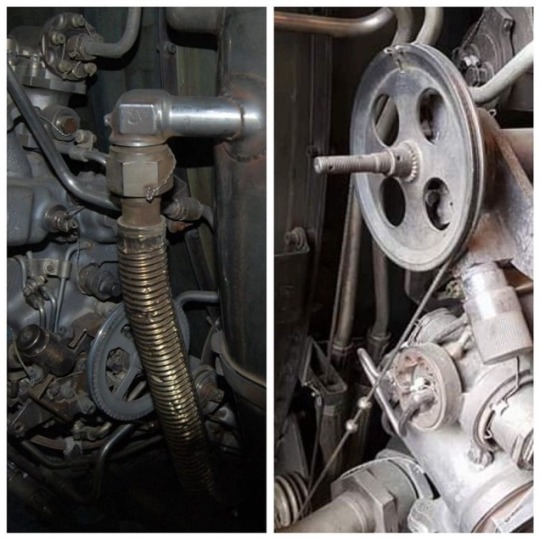
Early in the program, when then Colonel (he retired as a two-star General) Charles Minter was in command of the SR 71 program, an incident slowed down an operational flight. A mechanic placed the J-58 inlet spike on the wrong side of the airplane. This caused significant damage to the engine. I don’t know how long it takes to replace and transfer the spike to the other side, but I’m sure one of my experts can tell us. This caused Colonel Minter to order that every SR 71 in the fleet, 29 of them, be painted with a stencil of an R on the right side or an L on the left side to keep it straight. Next time you visit an SR 71, see if they still have the left and right identified as they do at the Smithsonian in Chantilly, Virginia. John Olp, SR-71 engine expert, told me something I’d never heard before about the cutting-edge engineering of the Blackbird.
‘The right engine throttle linkage was connected to the afterburner fuel control, and the left engine throttle linkage is connected to the main fuel control!
‘The aircraft throttle linkage was connected to the afterburner fuel control on the left engine and the main fuel control on the right engine (inboard side of the engines).
‘It absolutely did matter because of the two different functions.’
Olp adds more details; The two fuel controls were interconnected by a pulley and cable system in order to be fully synchronized. There was a pulley on each fuel control with a steel braided cable running underneath the engine, around more pulleys, so that, whatever position you set one fuel control at, the other one moved with it!
‘Afterburner fuel control on the right, main fuel control on the left. The aircraft throttles were connected to the threaded portion sticking out of the pulley shaft.’
So today when you visit an SR-71, walk up to the inlets and look for the “L” or the “R” and you will know a little story about why they are marked left and right.
~Linda Sheffield
@Habubrats71 via X
10 notes
·
View notes
Photo
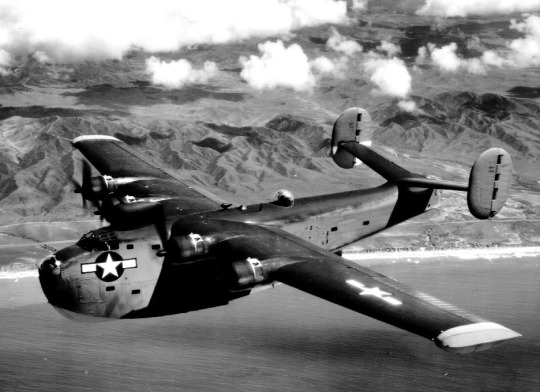
https://pacificeagles.net/consolidated-pb2y-coronado/
Consolidated PB2Y Coronado
With the first versions of the PBY Catalina beginning to be supplied to the Navy in 1935, attention turned to potential successor machines with better performance. Both Sikorsky and Consolidated were solicited for proposals, and although the Sikorsky model was ready first it was the PB2Y which would win the production contract. The prototype XPB2Y-1 was ready for its first flight by December 1937, and despite several issues was preferred to Sikorsky’s XPBS-1.
The PB2Y shared some innovations from the XP3Y/PBY, most notably the retractable floats, but was otherwise a completely new design. It was a very large aircraft, equipped with four R-1830 engines – unusually on later models these were fitted with 4-bladed propellers inboard, and 3-bladed outboard. The PB2Y originally had a single large tail, but there were problems with directional instability so additional stabilizers were added in an attempt to remedy the problem. This failed to solve the problem and instead a completely new twin tail was designed. Bomb bays were located in the wing roots with fittings for bombs, torpedoes or mines.
The first production machines entered service in late 1940. In squadron service the PB2Y was found to be underpowered, particularly the definitive PB2Y-3 version which had self-sealing fuel tanks and crew armour which added considerable weight. As a result the Coronados were primarily used as transports instead of combat aircraft. VP-13, the original PB2Y operator, established a series of services across the Pacific including a route from Hawaii to Rose Bay, Sydney, Australia – a 4,000 mile one way trip. Additional routes were added to other bases across the South Pacific and beyond as the Central Pacific offensive opened in late 1943. Some PB2Ys were converted into hospital aircraft and employed ferrying wounded servicemen back to Hawaii from forward garrisons, particularly Tarawa.
The PB2Y’s brief career as a combat aircraft began in January 1944, when VP-13 and VP-102 were assigned to strike Wake Island in support of the Marshall Islands campaign. 14 PB2Ys staged from Midway and carried out four raids between January 30 and February 9. 50 tons of bombs were dropped on Wake, but no PB2Ys were lost during any of the 2,100 mile missions. The missions were considered so important that the commanding officer of Fleet Air Wing 2, RAdm John D. Price, flew on two of the raids as an observer. In April 1944 a detachment of radar-equipped PB2Ys from VP-13 flew from Eniwetok, dropping mines in the seas around Truk, but the externally mounted mines badly effected the performance of the aircraft. The same detachment later flew harassment bombing raids on bypassed islands in the Marshalls, as well as anti-submarine patrols. During this time there were occasional contacts with Japanese aircraft, and VP-13 claimed five Japanese bombers shot down. Thereafter the PB2Y reverted back to non-combat roles.
10 PB2Y-3s were provided to the RAF via lend-lease, but they were not popular as patrol aircraft due to their relatively short range. Instead, like the Americans, the British assigned them secondary roles with RAF Transport Command operating them on transatlantic routes.
Consolidated PB2Y Coronado Specifications
PB2Y-3
PB2Y-5
XPB2Y-1
Consolidated PB2Y-3 CoronadoRolePatrol BomberCrew10Powerplant4x Pratt & Whitney R-1830-88 (1,200hp)Speed140mph (cruise)
224mph (max)Ceiling20,900ftRange2,310 miles (internal)Armament4x Browning M2 .50cal Machine Gun
Ordnance12,000lb bombsDimensions79ft 3in (length)
115ft 0in (wingspan)
27ft 6in (height)Wing Area1780 sq.ft.Weight41,031lb (empty)
68,000lb (gross)
RadarAN/APS-4 (Airborne surface search)Number produced210
Consolidated PB2Y-5 CoronadoRolePatrol BomberCrew10Powerplant4x Pratt & Whitney R-1830-92 (1,200hp)Speed170mph (cruise)
194mph (max)Ceiling20,500ftRange1,070 miles (internal)Armament8x Browning M2 .50cal Machine Gun
Ordnance12,000lb bombs
2 torpedoesDimensions79ft 3in (length)
115ft 0in (wingspan)
27ft 6in (height)Wing Area1780 sq.ft.Weight40,850lb (empty)
66,000lb (max)RadarASC (Airborne surface search)
Consolidated XPB2Y-1 CoronadoRolePatrol BomberCrew10Powerplant4x Pratt & Whitney R-1830-72 (1,050hp)SpeedCeiling0ftRangeArmament2x Browning M2 .50cal Machine Gun
3x Browning AN-M2 .30cal Machine Gun
OrdnanceDimensions0ft 0in (length)
0ft 0in (wingspan)
0ft 0in (height)Weight49,754lb (gross)
Number produced1
68 notes
·
View notes
Text
Extending her scoopfields more widely, intensifying the thermonuclear fireball that trailed her trailing Bussard engine, the ship shifted over to three gravities. This would have added almost thirty meters per second per second to a low velocity. To her present speed, it added tiny increments which grew constantly tinier. That was in outside measurement. Inboard, she drove ahead at three gee; and that measurement was equally real.
Her human payload could not have taken it and lived long. The stress on heart, lungs, and especially on body fluid balance would have been too great. Drugs might have helped. Fortunately, there was a better way.
The forces that pushed her nearer and nearer to ultimate c were not merely enormous. Of necessity, they were precise. They were, indeed, so precise that their interaction with the outside universe—matter and its own force fields—could be held to a nearly constant resultant in spite of changes in those exterior conditions. Likewise, the driving energies could safely be coupled to similar, much weaker fields when the latter were established within the hull.
This linkage could then operate on the asymmetries of atoms and molecules to produce an acceleration uniform with that of the inside generator itself. In practice, though, the effect was left incomplete. One gravity was uncompensated.
Hence weight inboard remained at a steady Earth-surface value, no matter how high the rate at which the ship gained speed. Such cushioning was only achievable at relativistic velocities. At an ordinary pace, their tau large, atoms were insufficiently massive, too skittish to get a good grip on. As they approached c, they grew heavier—not to themselves, but to everything outside their vessel—until the interplay of fields between cargo and cosmos could establish a stable configuration.
this (from tau zero) is total nonsense right? like, if youre physically accelerating at 3 g, you have to feel 3 g, and theres no way around even with handwavium unless like GR wasnt true or something? i feel like this must be nonsense
17 notes
·
View notes
Text
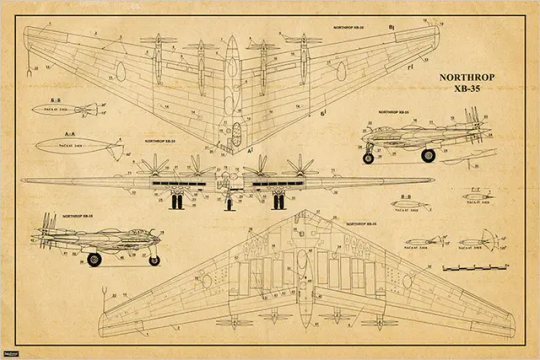

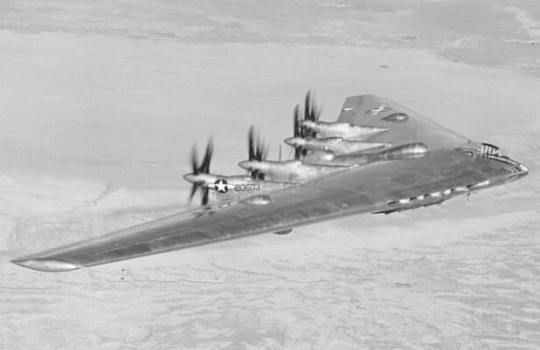

XB-35
Crew: 9: pilot, copilot, bombardier, navigator, engineer, radio operator, three gunners
Powerplant: 2 × Pratt & Whitney R-4360-45 Wasp Major 28-cylinder air-cooled radial piston engines, 3,000 hp (2,200 kW) each mounted left and right outboard
Powerplant: 2 × Pratt & Whitney R-4360-47 Wasp Major 28-cylinder air-cooled radial piston engines, 3,000 hp (2,200 kW) each mounted left and right inboard
Maximum speed: 391 mph (629 km/h, 340 kn)
Cruise speed: 240 mph (390 km/h, 210 kn)
Range: 7,500 mi (12,100 km, 6,500 nmi)
Service ceiling: 39,700 ft (12,100 m) (restricted to 20,000 ft (6,096 m) due to APU problems)
Guns: 20 × .50 in (12.7 mm) M3 Browning machine guns in six remotely controlled turrets and one tail stinger
Bombs: 52,200 lb (23,678 kg) of bombs, maximum
5 notes
·
View notes
Note
If you got your dream boat what would it be? And any recommendations for boats?
Can't give you specific models, as I haven't quite found one that ticks all my boxes, but I can give you the major criteria I would look for in a boat:
Bilge keel for the stability, the shallower draft, and the fact it can be beached between tides so there's good opportunities for maintenance without needing to be lifted out the water at a boatyard
Fractional sloop, cos that's what I am most familiar with.
Inboard engine. absolutely a requirement, dealing with outboards dangling off the back of a large boat utterly sucks.
Fibreglass + wood construction. I wouldn't take on a boat that is all wood, because from what I have seen they take a fair bit more effort to maintain, and getting the hardwoods required ethically is expensive. They do look fantastic though.
Probably want ~30ft length as that seems to be the sweet spot for a liveaboard. The bigger the boat, the more it usually costs to put it in a marina. Bearing in mind if I ever made this fantasy a reality, my partner would likely want to come along for the ride, and while he is fairly minimalist, he still has stuff that would have to be stowed. There has to be enough room for a couple of berths.
That probably covers the things I would look for initially. Most everything inside is gonna be customised to suit, so the type of toilet or cooker or bedding configuration aren't a big deal. They can be changed if need be.
The big issue i would have would be getting steady internet for my current work from home job. Mobile might work well enough, but would be kinda pricy. camping out in a marina with wifi would definitely work, but that's getting too close to paying someone rent for my taste.
#i'd ultimately want to figure out some sort of work#that doesn't require copious amounts of internet use#but can be done on a laptop#if my art was better#that might be a viable option#but i dunno#i suspect it would takes years of constant effort#to get it to a point where it would be viable to offer commissions#so that'll have to stay a fantasy for now
7 notes
·
View notes
Text



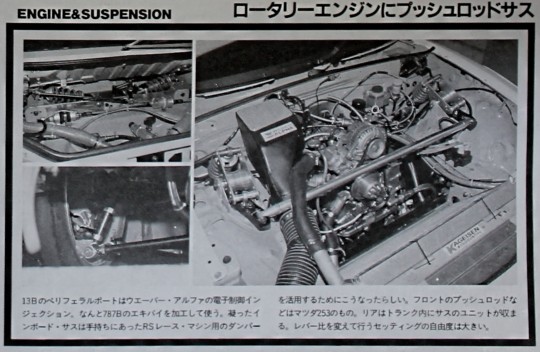
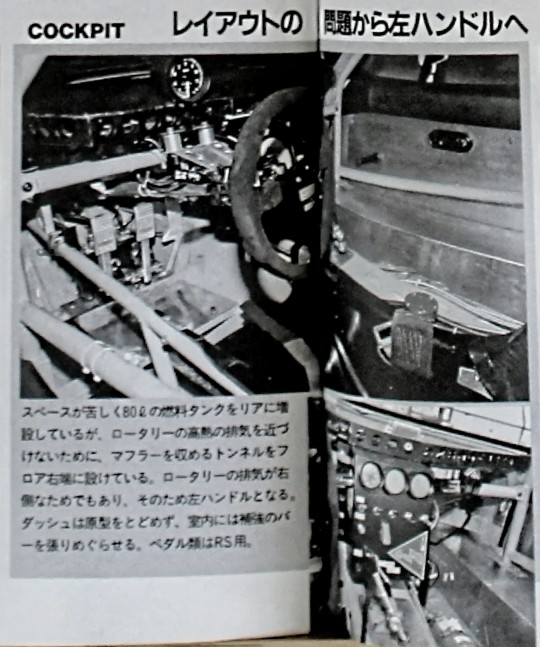
Thorough dissection of KAGEISEN ROADSTER
this is the strongest ever Roadster
Roadster racing cars are called Freshman Races. It's a small FR that doesn't cost a lot, is running a lot in gymkhanas, and has plenty of racing parts. It's a good material to challenge motor sports. However, the roadster introduced here is a little different. It is truly a unique machine that should be called a great challenge.
Photography: Takashi Takeda Photography: Shunichi Moriyama Editorial Department
It's still in the maturing stage, but it's one to expect
It is a unique machine among all the racing roadsters. Kagei Sen means Tokyo Science and Arts College. The school offers a variety of courses related to automobiles, and this machine was created as part of the racing attack course. And I'm actually participating in the race, but it's great that the place for that challenge is the JGTC, that is, the All Japan Championship.
The instructor, Toshihiko Nogami, is a former Mazda Speed staff member who also works as a driver for this machine and loves racing. This class is led by Mr. Nogami's experience and passion, but I heard that racing is not a "bad road," and that Honda's participation in F1 also had the purpose of developing human resources for its employees. Because it is a certain amount, the effect must be great.
We chose the Roadster as the base because it is a unique car like no other.
The main reason for this is that it is easy to use, and of course the small size and low center of gravity is also a big point as a base machine. In order to load more 13B rotaries, the layout of the exhaust, etc., has a balance with the fuel tank, which is compact and does not take up much space. As a result, it became a “real racing car” with elaborate construction such as left-hand drive and inboard suspension.
Of course, these have the meaning of studying as teaching materials, but they are also effective because they are actually fighting in practice. From a purely fast-paced standpoint, the short wheelbase leaves some stability concerns, but it's an advantage on technical tracks, and the low center of gravity due to the open space is an advantage. If it is the same engine, there is hope that it will be faster than FD.
So far, he has not been able to start in Round 3, and although he ran in Round 4, he was forced to retire due to damage to the oil cooler. Currently, we are steadily repeating test runs, so I am looking forward to the future when it is finished.
ENGINE&SUSPENSION
Push rod suspension for rotary engine
The 13B peripheral port uses Weber Alpha's electronically controlled injection, which uses the exhaust pipe of the 787B. The elaborate inboard suspension is a damper for the RS race machine that I had on hand.
This seems to have happened in order to make use of the front push rods from the Mazda 253. The rear suspension unit fits in the trunk. The degree of freedom of setting performed by changing the lever ratio is large.
COCKPIT
of the layout from problem to left-hand drive
Due to limited space, an 80-liter fuel tank has been added to the rear, but in order to keep the high exhaust of the rotary from approaching, a tunnel is provided at the lower right end to accommodate the muffler. This is also because the exhaust of the rotary is on the right side, so it is a left-hand drive. The dash does not retain its original form, and the interior is equipped with additional bars. Pedals are RS.
AERO PARTS Are these Aeros coming soon?
The hardtop is made of carbon. Rigidity is also improved, and the weight can be reduced by nearly 10kg compared to normal. Considering the air resistance, it is said that the top is good. Front bumper, spoiler, fender October with mirrors to be released at the end.
SPECIFICATION
full length 3970mm
Width 1775mm
Height not clear
Wheelbase 2265mm
Tread (F/R) 1505/1520mm
vehicle weight 950kg
engine type 13b
engine type rotary peripheral port
Total displacement 654ccX 2
Maximum output 320PS/9000rpm
Maximum torque 27.0kg-m/8000rpm
suspension Pushrod + W wishbone
Tire (F/R) 215/625-17 / 240/625-17
#Kagei Sen roadster#KAGEISEN#Eunos roadster#Miata#MX5#Rotary miata#Rotary MX5#13B mx5#13B miata#13b roadster#JDM
8 notes
·
View notes
Video
Boeing XB-38 by Willard Womack
Via Flickr:
Boeing, in conjunction with Lockheed Vega, a contract B-17 builder, modified a stock B-17E with Allison V-1710 liquid cooled engines. The thinking was to have something ready in case there was a shortage of Wright R-1820 radial engines. It was faster, but had a lower altitude ceiling. On its ninth flight a fire in number three engine (right inboard) forced the crew to bail out. The aircraft was destroyed and the project cancelled. All Allison engine powered aircraft had a carburetor air scoop on top of the engine cowling. These do not, and look like RR Merlin's. There are what appear to be air scoops, one on either side of the spinner. The ducts from these go to the rear, bottom of the engine as they would to feed air the the Merlin up draft carburetor. Not to to the top as would to feed an Alison. All sources state that these are Allison, but somewhere, in my memory is the word Merlin from when I first read about the B-38. I will call them Allison's but I am not sure.
23 notes
·
View notes
Photo

N754AN, one of American's 46 active Boeing 777-200ERs, gets prepped for its flight at Terminal D at DFW. Note the inboard ailerons just aft of the engines- the right one is drooping but the left one is not. Technically those inboard ailerons are flaperons- they also droop to supplement the trailing edge flaps during takeoff and landing. When Flaps 5 is selected, the flaperons droop 10 degrees trailing edge down. The flaperon droops 20 degrees down with Flaps 15/20, and then 31 degrees down when the flaps are set for landing- Flaps 25/30. Depending upon the speedbrake position, the primary flight computers on the 777 remove the droop to "dump lift" at landing. Interestingly there is a takeoff bypass on these flaperons- when takeoff thrust is selected, the flaperon floats free, drooping due to gravity, then rising as speed increases. Once 80 knots is reached, power to flaperon actuators is restored and it assumes its proper "droop" configuration. This is done to reduce fatigue on the flaperon actuators- imagine having to maintain a specified droop angle with a big turbofan engine in front of it at takeoff thrust. So the flaperon is allowed to float free briefly on the takeoff roll. Earlier generation airliners like the 747 and DC-10, the inboard aileron did not have a flap function. That gap in the flaps behind the engines where the inboard aileron is located is sometimes referred to as a thrust gate. Discontinuities in the trailing edge flaps like thrust gates detract from their overall efficiency, so newer generation airliners had features to eliminate or lessen the impact of the thrust gate. Transforming the inboard aileron into a flaperon is one approach. #Avgeek #aviation #aircraft #planeporn #DFW #dfwavgeek #airport #planespotting #Boeing #777 #N754AN #American #Airlines #instagramaviation #splendid_transport #aviationlovers #aviationphotography #flight #AvGeeksAero #AvgeekSchoolofKnowledge #AvGeekNation #TeamAvGeek (at DFW Airport) https://www.instagram.com/p/CfCPYm4JVRx/?igshid=NGJjMDIxMWI=
#avgeek#aviation#aircraft#planeporn#dfw#dfwavgeek#airport#planespotting#boeing#777#n754an#american#airlines#instagramaviation#splendid_transport#aviationlovers#aviationphotography#flight#avgeeksaero#avgeekschoolofknowledge#avgeeknation#teamavgeek
2 notes
·
View notes
Text

"A cluster of eight H-1 engines were used to thrust the first stage of Saturn I (S-I stage) and Saturn IB (S-IB stage). The engines were arranged in a double pattern. Four engines, located inboard, were fixed in a square pattern around the stage axis, while the remaining four engines were located outboard in a larger square pattern and each outer engine was gimbaled. Each H-1 engine, fueled with liquid oxygen (LOX) and kerosene (RP-1), initially had a thrust of 188,000 pounds each for a combined thrust of over 1,500,000 pounds. Later, the H-1 engine was upgraded to 205,000 pounds of thrust and a combined total thrust of 1,650,000 pounds for the Saturn IB program. This photo depicts a single modified H-1 engine. The H-1 engine was developed under the direction of Marshall Space Flight Center (MSFC)."
Date: January 9, 1968
NASA ID: 6871412
#Rocketdyne H-1#H-1#Rocket#S-I#S-IB#Saturn I#NASA#Apollo Program#Saturn IB#Marshall Space Flight Center#MSFC#Huntsville#Alabama#January#1968#my post
45 notes
·
View notes
Photo

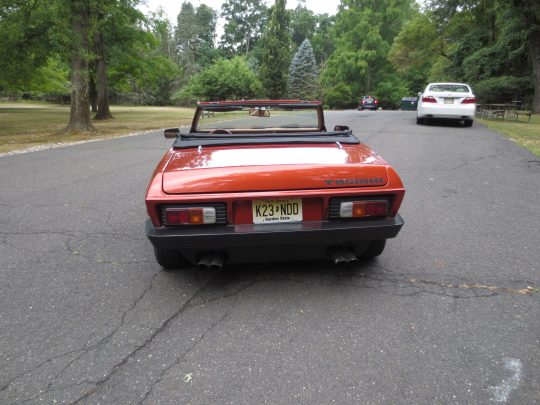
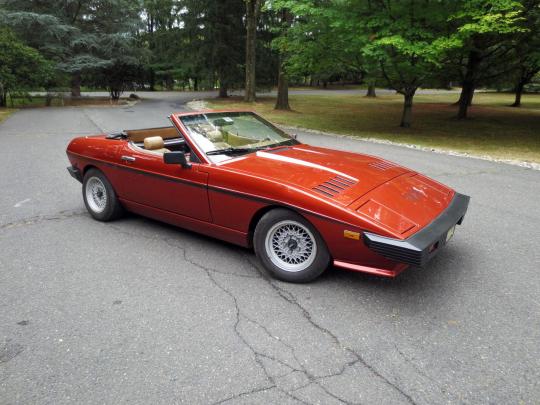


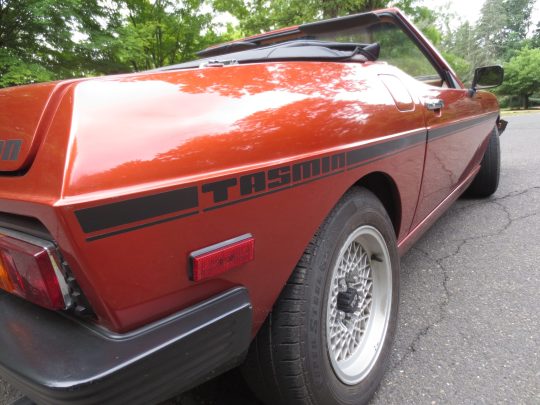
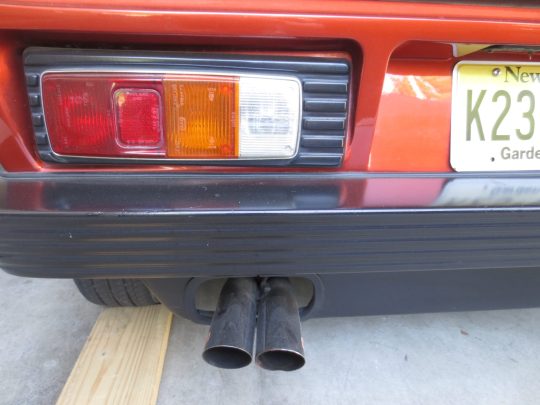



TVR Tasmin
This 1983 TVR Tasmin is a Series I convertible finished in orange metallic over tan upholstery and is powered by a Ford 2.8-liter V6 paired with a four-speed manual transmission. Features include a three-position convertible top with a removable top panel, pop-up headlights, power windows, inertia reel seatbelts, an aftermarket stereo unit, and 14″ basketweave wheels.
The Oliver Winterbottom-styled fiberglass body is mounted to a tubular steel chassis designed by former Lotus engineer Ian Jones. The three-position convertible top features a removable upper roof panel along with a folding rear-window section, and additional exterior touches include a front spoiler, pop-up headlights, dual mirrors, Tasmin body graphics, and quad exhaust outlets.
Silver 14″ basketweave wheels are mounted with 205/60 Federal tires, and a matching spare with a Goodyear tire is stored in the trunk. The four-wheel disc brakes feature inboard rear rotors.
61 notes
·
View notes
Text
0 notes